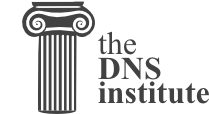
The Domain Name System (DNS) was designed in a day and age when the Internet was a friendly and trusting place. The protocol itself provides little protection against malicious or forged answers. DNS Security Extensions (DNSSEC) addresses this need, by adding digital signatures into DNS data, so each DNS response can be verified for integrity (message did not change during transit) and authenticity (the data came from the true source, not an impostor). In the ideal world when DNSSEC is fully deployed, every single DNS answer can be validated and trusted.
DNSSEC does not provide a secure tunnel; it does not encrypt or hide DNS data. It operates independently of an existing Public Key Infrastructure (PKI). It does not need SSL certificates or shared secrets. It was designed with backwards compatibility in mind, and can be deployed without impacting "old" unsecured domain names.
DNSSEC is deployed on the three major components of the DNS infrastructure:
In this guide, we will focus on the first two components, Recursive Server and Authoritative Server, and only lightly touch on the third component. We will look at how DNSSEC works, how to configure a validating resolver, how to sign DNS zone data, and other operational tasks and considerations.